Intersolar North America and Energy Storage North America 2022 shook off the dust of a two-year hiatus on any in-person solar trade shows. By Wednesday afternoon last year, the show floor was quiet, but attendance increased for 2023. Intersolar issued a press release on Tuesday, the first day of this year’s show, reporting a record-breaking 6,000 registrants and 350 exhibitors.
Yet it’s more than a trade show. One of the main attractions of Intersolar has become the annual Solar Games, where teams of contractors compete to install a residential project on a mock pitched rooftop. In the background of meetings with manufacturers at booths, classic rock music and commentary blasts from the back of the room.
In those booth meetings, manufacturers expressed feeling bolstered by the incentives included in the recently passed Inflation Reduction Act. Many have plans to expand their existing domestic presence or move operations stateside. The path to truly domestic component manufacturing is narrowing for certain hardware like solar trackers, and others like solar panels that use raw materials not produced here have a longer path ahead.
Despite that, interest in everything solar hardware is at an all-time high. Here’s some of what we saw at Intersolar this year.
Also, be sure to check out our mounting system highlights here.
Briggs & Stratton’s SimpliPhi Integrated Systems
SimpliPhi, a longtime manufacturer of inverter and energy storage technology, was acquired by power equipment manufacturer Briggs & Stratton last year. Under new branding, B&G brought along its SimpliPhi storage solutions that employ a lithium iron phosphate chemical composition. These battery units are scalable, meaning they can be tied consecutively to meet increasing backup power demands. At the show, the batteries were paired with SimpliPhi’s SPHI-IN-6, a 6-kW hybrid inverter. All B&G SimpliPhi products have a 10-year warranty.

Briggs & Stratton’s SimpliPhi Integrated Systems.
TranzVolt’s G2
Solar panels keep getting bigger, and they will continue to do so. This presents the challenge of creating complimentary technologies like mounts and power electronics to properly install these large-scale modules. For installers working in the residential space, it also means figuring out how to get these giant panes of glass to the rooftop safely. TranzVolt’s solution is G2, a remote-controlled lift that hoists solar panels and other components to the roof by climbing a ladder. Click that tweet to see how it works.
Check out the TransVolt G2, a device that lifts solar panels (and other hardware to the roof) pic.twitter.com/dCoMPAQGhB
— Billy Ludt (@SolarBillyL) February 15, 2023
Mango Power’s scalable storage units
Many companies have humble origin stories. Mango Power’s starts on the crowdfunding website IndieGogo in 2021, where a campaign to produce its initial 6.9-kWh offering, the Mango Power Union, garnered more than $900,000. What made the Union unique was the ability to use it for home backup or lift the battery module off the unit and use it for outside applications. Another battery can be installed atop the Union, and it can be paired with another unit to scale it up. Mango Power is also producing 20 kWh batteries and hybrid inverters to provide larger standalone home backup and EV charging.

Mango Power M Power Hybrid Inverter and storage.
S-5!’s MLPE clip
S-5! is known for producing metal rooftop attachments for use within and outside the solar industry. From those existing metal rooftop mounts the company is building accessories to complement whole-array installation and its latest offering is a clip for module-level power electronics (MLPE). Installers simply attach it to the MPLE unit and press it onto the module frame by hand to keep it in place.

S-5! module-level power electronics clip.
Panduit’s Cable Cleats
Utility-scale solar projects are increasing in size, and the array-level cabling required to route that much power isn’t small either. Dealing with that much electrical production means proper and safe cable management. With those two considerations in mind, Panduit is producing Cable Cleats, a cable management solution often used in the oil and gas industries that protects against short circuits. The polymer Cable Cleats are produced domestically, and while they’re not a popular solution in the solar industry currently, Panduit expects they will be soon.
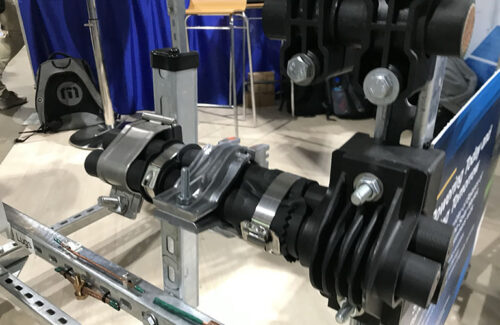
Panduit Cable Cleat
The next Intersolar NA will be held in San Diego from January 17 to 19, 2024.

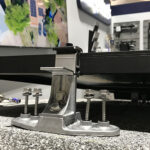
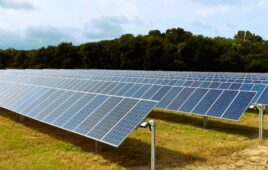
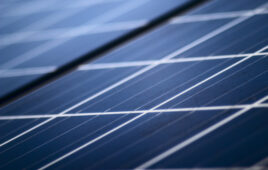

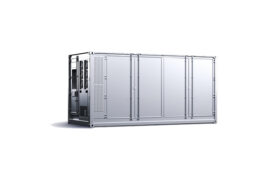
Solar, Bring it on!!! Storage? is a concern